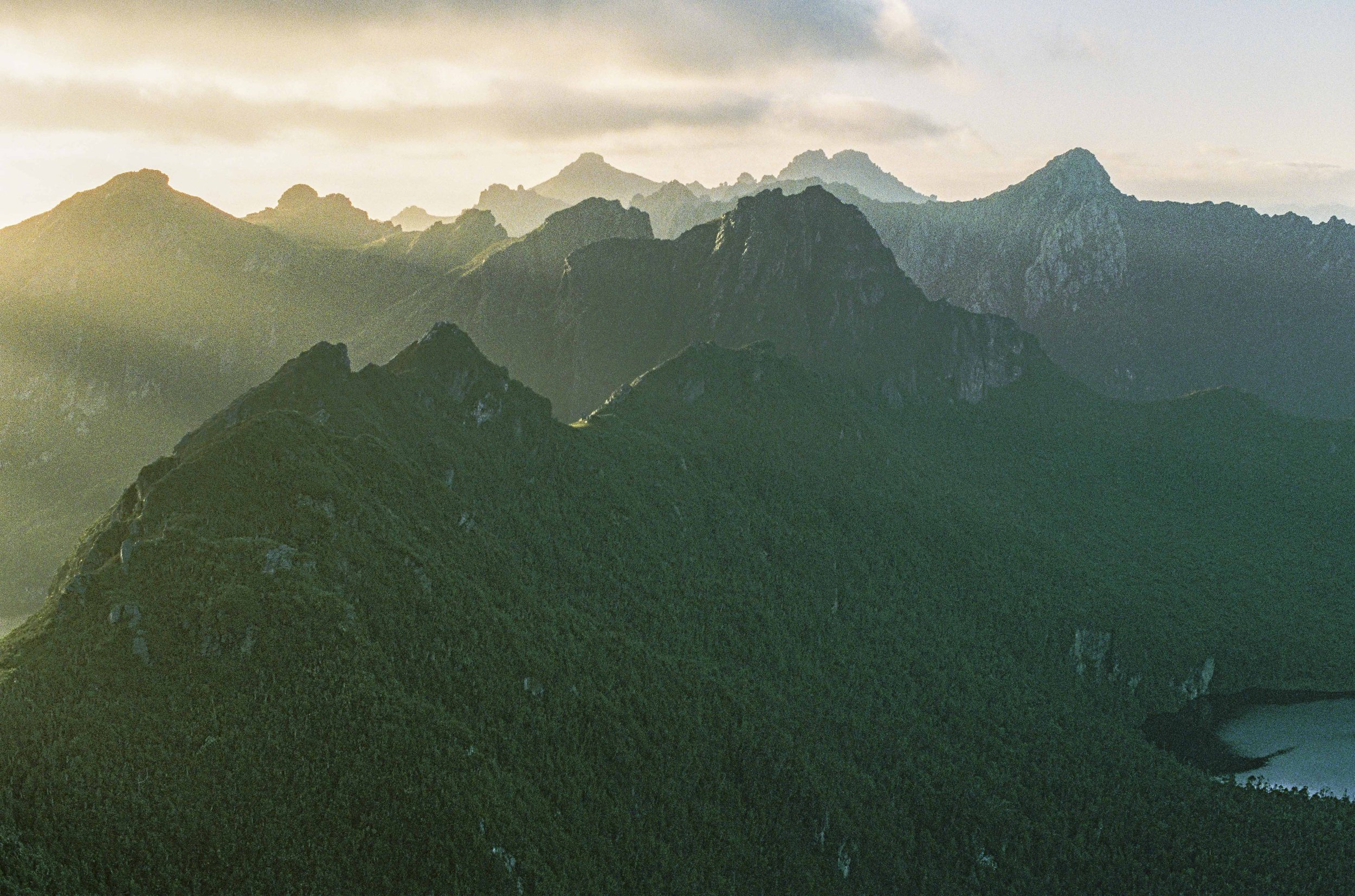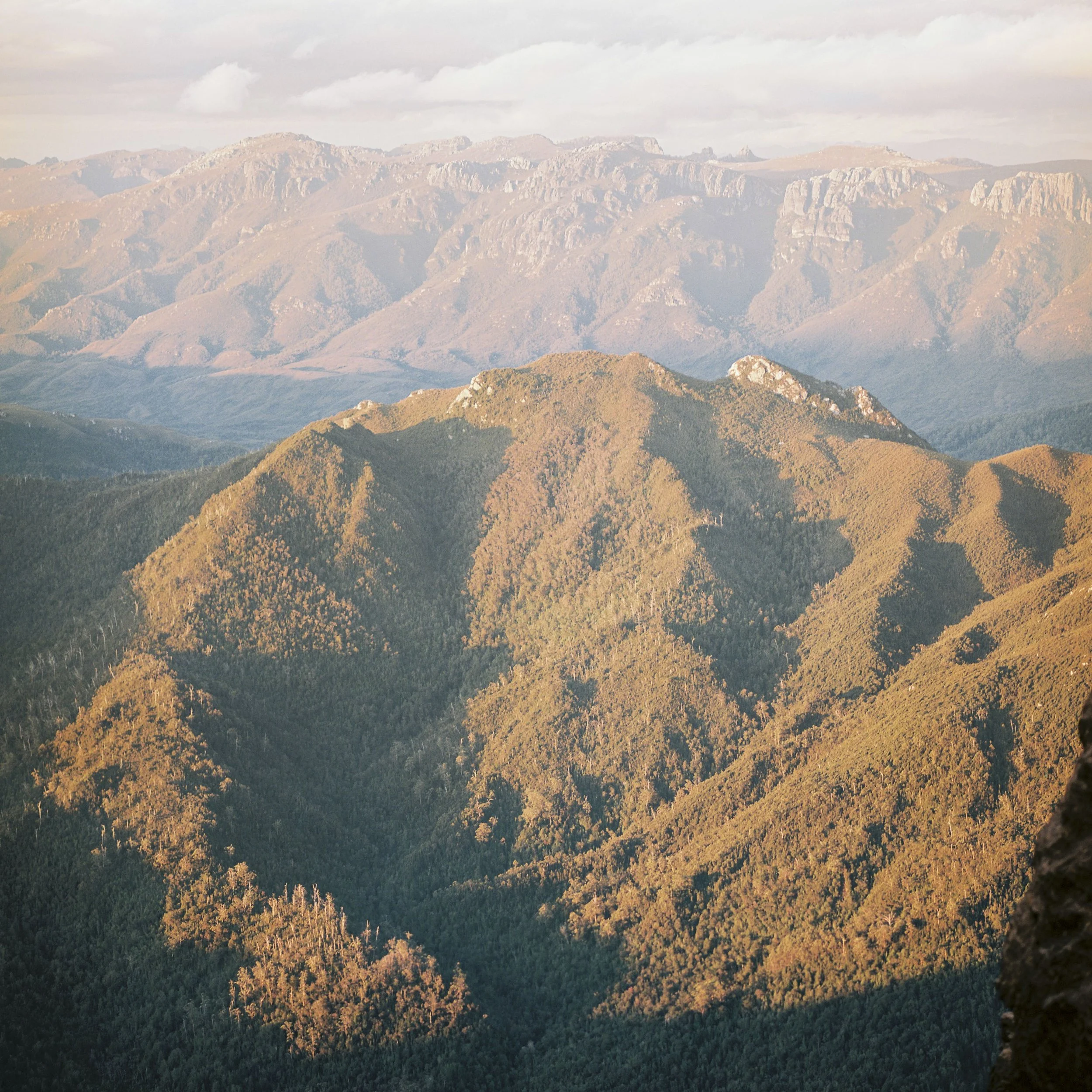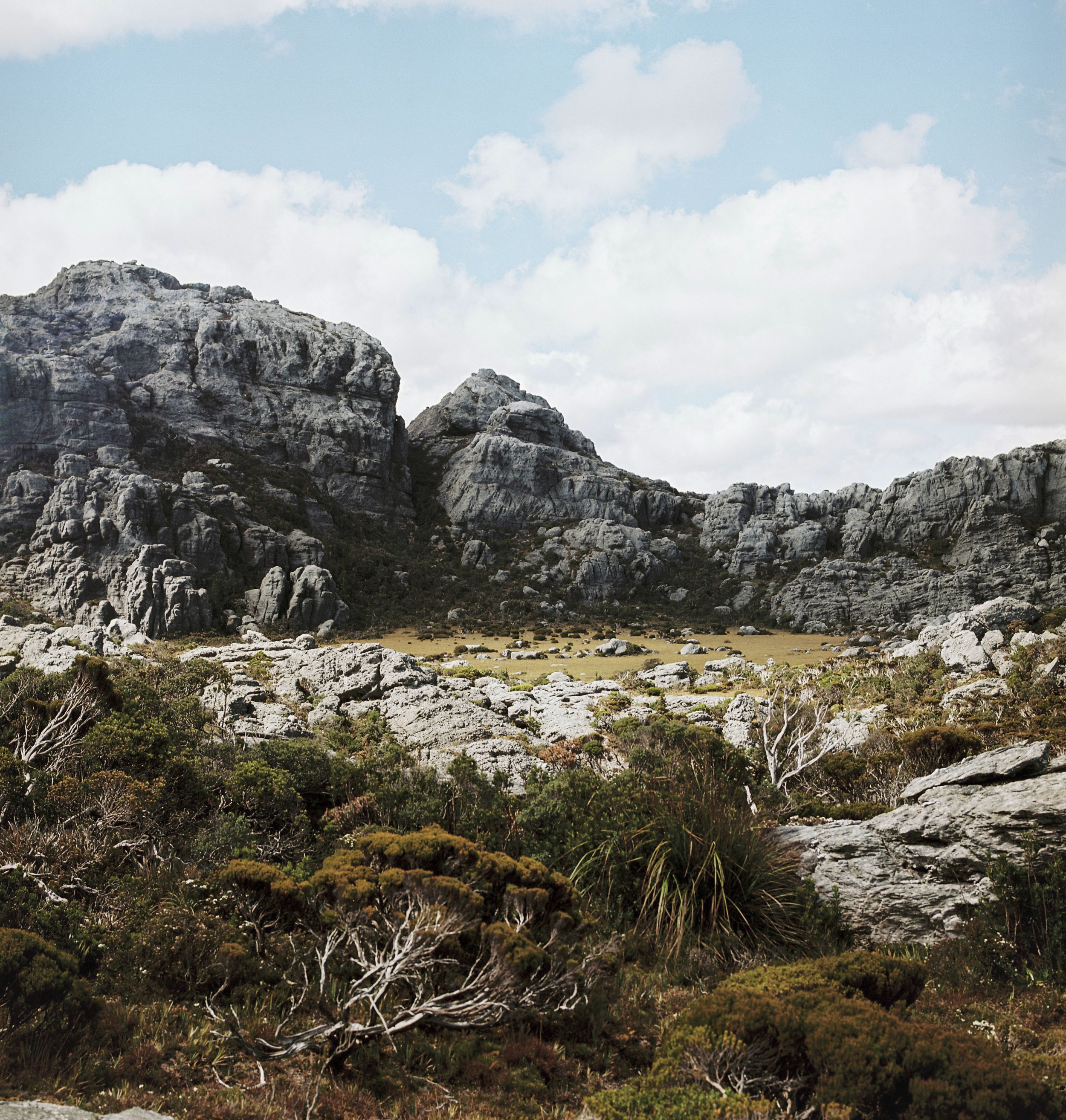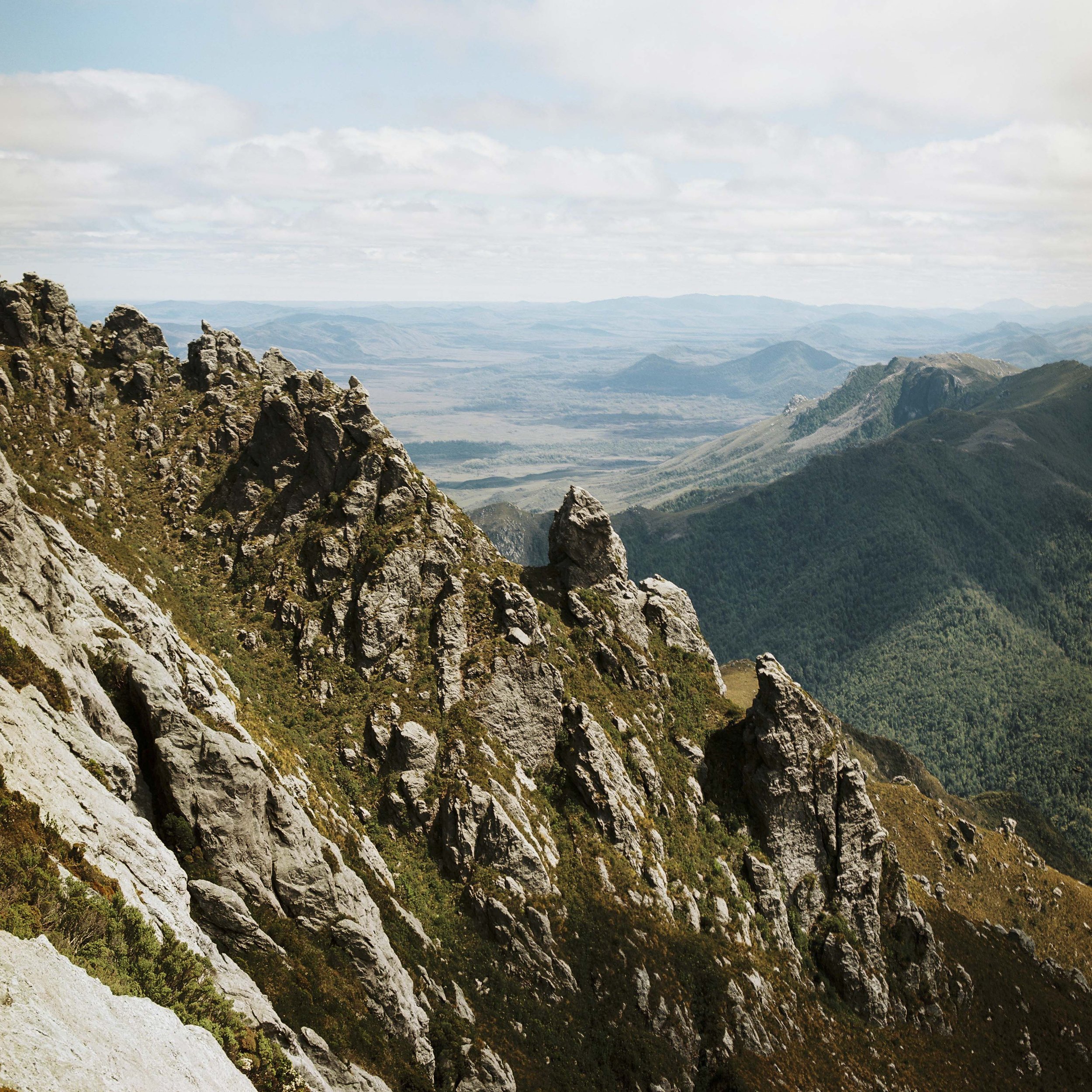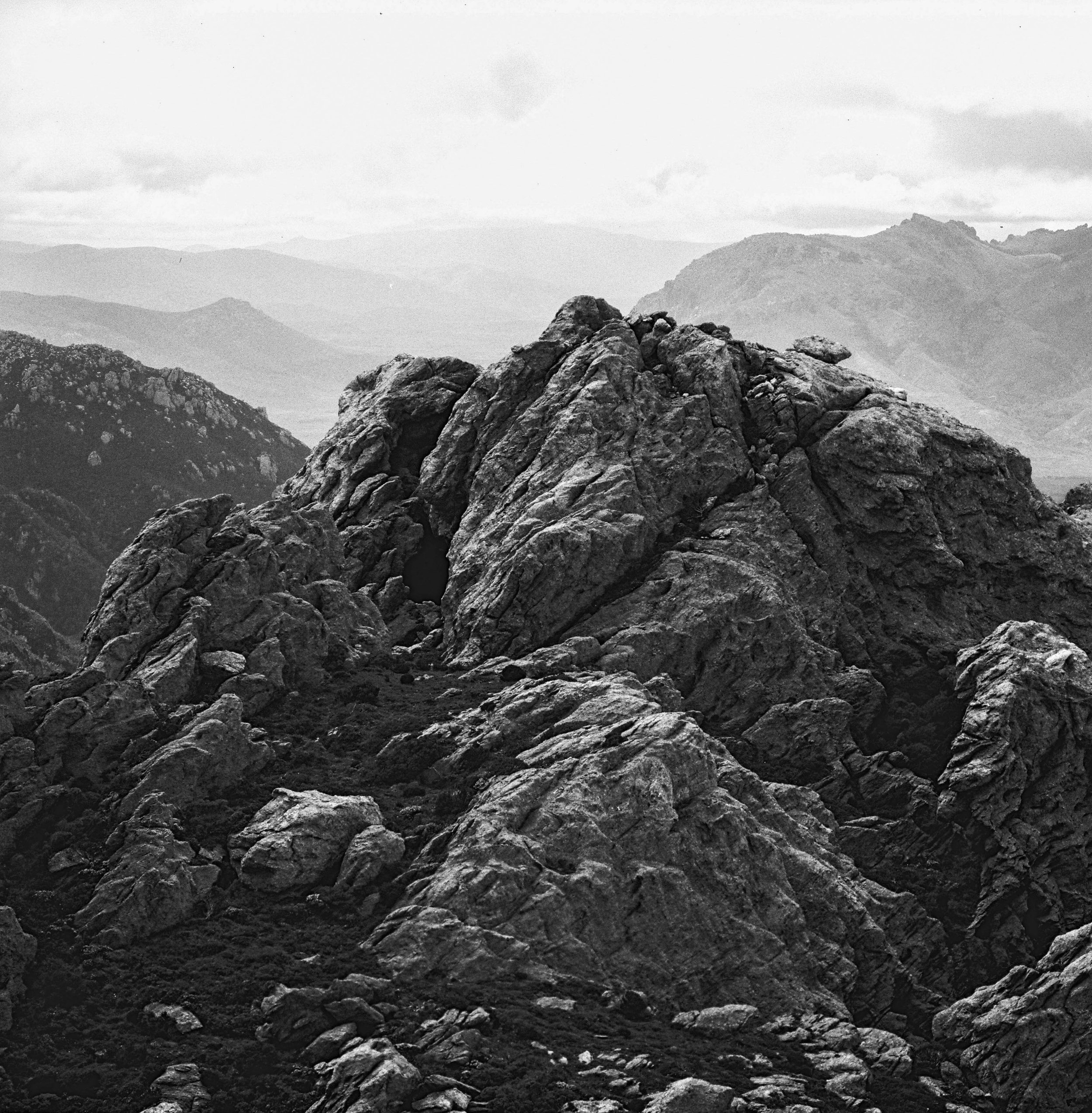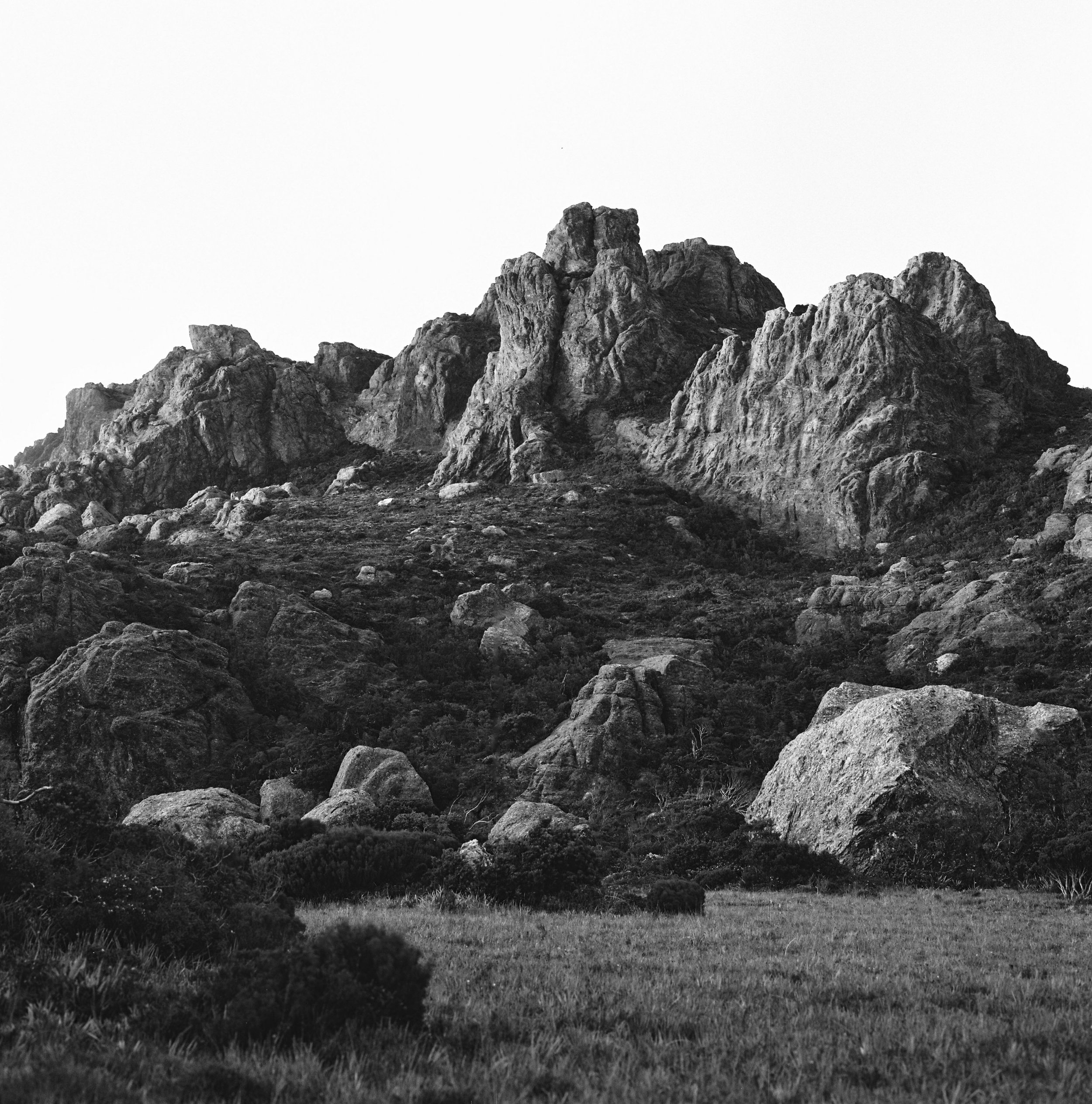Bike touring is a bit like life; some days feel dreamy and effortless, while other days feel like hard work. There are a lot of factors at play here: how far we’ve gone the day before, whether we’ve had appropriate nutrition, the number of hills we’ve had to climb, the weight of the gear we carry, and perhaps most importantly, the working order of the bicycle we are riding. A mechanical issue will stop a cyclist quicker than running out of food or water!
Looking back at Arrowtown. Pentax MX, Cinestill BWXX, April 2024.
A bicycle is a finely tuned machine. When it’s in good working order, it is quiet, efficient and an absolute joy to ride (especially downhill). But if even the tiniest component is slightly out of alignment, it will result in clunkiness, and create problems that will persist until addressed. The solution to a mechanical problem can be simple and minimal, and herein lies the art of bicycle maintenance. More often than not, we just need to tighten up a bolt, take in a cable, pump up the tube a bit. The trick or the art is in knowing what miniscule action will lead to a favorable outcome. As easy as it is to set things right, it is just as easy to cause things to fall out of alignment if our actions are not guided by the appropriate knowledge.
Personally, I’m a reluctant mechanic. It’s only recently that I’ve started meddling with what I’ve always thought to be a bit of a dark art, and only out of necessity. If my bike is not working the way I want it to, that’s generally the only reason I will take up the tools. If it ain’t broke, don’t fix it, right?
My approach for this tour of New Zealand was to ensure I have the essential tools and spare parts that if the most likely things broke down, I’d have the means to fix it. When it came to it, I figured that I’d simply figure out how, when I really needed to. A few items in my repair kit, but not limited to were: multi tool, spare tube, patch kit, tyre leavers, pump, spare cables, spare spokes, lube, grease, rags, quick links, cable ties, super glue, tape, spoke key, adjustable spanner. I mean you can always take more gear but as it was the repair kit weighed about 1.5kg so I figured what I had would have to do.
Looking back from the Crown Range towards Lake Wakatipu. Pentax MX, Cinestill BWXX, April 2024.
After my first week cycle touring the South Island of New Zealand, Te Waipounamu, I couldn’t help but notice that the brand new tyre I had put on my front wheel had a wobble, a slight kink in it. With every revolution of the wheel, this would give the front wheel a slight kick to the side. Not a huge issue really, but when we are talking about a long journey where efficiency is the key to longevity, it is rather annoying. I tried reseating the tyre, to no avail. It was a wonky tyre and it had to go. I picked up a new tyre in Queenstown after my side trip to Milford Sound, and voila, the wobble was gone. Joy, joy, joy! Smooth rolling from here on!
Then I measured my chain to see how much it has stretched. Somehow, I managed to wear the new chain out in 500km! The trouble with a stretched chain is that it will wear the cassette (the cogs on the back wheel) a lot quicker, then the cassette will need replacing too. So it’s better to change the chain earlier and save the cassette. Now the chain and the cassette kind of get ‘used to each other’ after a while. Changing either component is bound to affect the overall result. And sure enough, after I had a new chain put on in Queenstown the chain started skipping randomly. I popped into the bike shop in Arrowtown on my way through to Wanaka and that mechanic said there is absolutely nothing you can do about it! He said the new chain will just have to get used to the old cassette. And sure enough, after the first 100kms the chain stopped skipping! A few bumps at the start of that particular relationship and things got ironed out thankfully.
Then I got a puncture in the rear tube a week or so later. Easy fix, right? Should only take 20 minutes! Two hours later I had the bike back together and working again. Somehow the rim tape had slipped to one side and the rim had punctured the tube. So I re-seated the rim tape before I put it all back together. I also cleaned the bike up a bit because she was getting real dirty and gritty. A gritty chain will also wear a lot quicker.
100km down the track, same thing happened. Another puncture, in the same place! The rim tape had slipped again. It was time to replace the rim tape. I learnt the hard way that most rim tapes these days don’t actually have an adhesive on them. They have to be stretched over the rim, starting from the valve. Luckily I was only a 100m from a bike shop and the mechanic there was able to show me how to do it. There was a little trick where he ran a very thin screwdriver beneath the tape all the way around the wheel to make sure it was seated in the centre. Without this mechanic’s help, I would have been on the side of the road for a good while longer!
One has to be vigilant. Always on the lookout for things not being right. Just yesterday, I went to lock up my bike and as I fastened the chain around the rear wheel, I noticed that a couple of my spokes were really loose. Lucky I had a spoke key! So I turned my bike upside down there and then and had to tighten up just about every spoke on one side of the rear wheel. I matched the tension to the front wheel’s spokes which seemed to be all fine. The rear wheel was a reasonably new wheel so I figure that’s why those spokes have loosened up. Afterward I had to fiddle a bit to true the wheel and to line up the break calipers since adjusting the spoke tension pulls the wheel right and left a bit. Again a few slight adjustments, and the wheel was good to go!
That tree in Wanaka. Pentax MX, Cinestill BWXX, April 2024.
And so the art of bicycle maintenance is about solving little problems, as they pop up. A stitch in time saves nine. Being prepared and fixing issues early saves us bigger problems down the track. Often it takes a little bit of trial and error and a bit of perseverance to figure out the right course of action. Just like life, ey bru?
Flax, native birds. Pentax MX, Cinestill BWXX, April 2024.
I met a Japanese bike tourer in Haast on the West Coast who had been touring for three years! He didn’t speak much English, but the words I did manage to get out of him were this ‘So tired, every day.’ He had an incredible amount of gear. Two spare tyres, and his rack on the rear was loaded to the brim. But he had ridden across northern Australia and was doing effectively what was a world tour. It was nice to see that there was someone out there who had even more gear than me and was able to keep going for such a long time. Even if he was knackered all the time!
Endless enthusiasm, despite the hardships, that’s the spirit! Pentax MX, Cinestill BWXX, April 2024.
Why do we do it? Why all the hard work, the endless hills, sorting out of problems, the pain and suffering? Because the good days on the bike are worth it. The days when there is a tailwind helping us and the riding feels effortless, when we are on the road but we feel like we are actually flying. When life is simple, and the only thing we need to think about is our next source of water, food and a flat spot to pitch our tent. When the long, wide, open road is ahead of us, calling, with an immensity of possibilities. All of a sudden, our dwindling bank account matters not, and we only want one thing; to keep riding, around the Earth if that’s where we’re destined to go.
Hills above Arrowtown, NS, Pentax MX, Cinestill BWXX, April 2024.






















